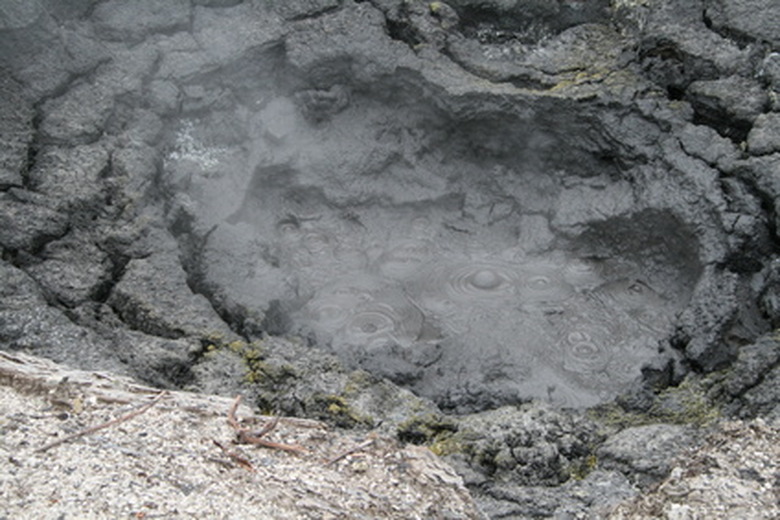How To Calculate The Freezing And Boiling Point
Boiling and freezing points of pure substances are well-known and easily looked up. For instance, almost everyone knows that the freezing point of water is 0 degrees Celsius, and the boiling point of water is 100 degrees Celsius. Freezing and boiling points change when matter is dissolved into a liquid; freezing points become lower and boiling points become higher. Dissolving salt into water will have these effects on the freezing and boiling points of the water. Calculating new boiling and freezing points of solutions is relatively easy to do.
Calculating a Change in Freezing Point
Step 1
Look up the freezing point of the liquid (solvent) for which you are calculating the new freezing point. You can find the freezing point of any chemical on the material safety data sheet that accompanies it. For example, water has a freezing point of 0 degrees Celsius.
Step 2
Calculate the molal concentration of the solution that will be created after you add your dissolved substance (solute) to the solvent. For instance, consider a solution created by dissolving 0.5 moles of salt into 1 liter (L) of water. One liter of water has a mass of 1 kilogram (kg), so:
Molality = moles of solute / mass of solvent = 0.5 / 1 = 0.5 m
You can obtain the moles of your solute by dividing the number of grams dissolved by its molecular mass (see Resources).
Step 3
Look up the freezing point depression constant (K) for the solvent you are using. A freezing point depression constant is an experimentally determined number that indicates the degree to which a change in a liquid's solute concentration affects its freezing point. Water has a freezing point depression constant of 1.86.
Step 4
Plug your values into the following equation to calculate the new freezing point of your solution:
Freezing point = old freezing point – K x molality
Our water example would look like this:
Freezing point = 0 – 1.86 x 0.5 = -0.93 degrees Celsius
Calculating a Change in Boiling Point
Step 1
Look up the boiling point of the solvent for which you are calculating the new boiling point. You can find the boiling point for any liquid on the material safety data sheet that accompanies it. For example, water has a boiling point of 100 degrees Celsius.
Step 2
Calculate the molal concentration of the solution that will be created after you add your solute to the solvent. For instance, consider a solution created by dissolving 0.5 moles of salt into 1 liter (L) of water. One liter of water has a mass of 1 kilogram (kg), so:
Molality = moles of solute / mass of solvent = 0.5 / 1 = 0.5 m
Step 3
Look up the boiling point elevation constant (K) for the solvent you are using. A boiling point elevation constant is an experimentally determined number that indicates the degree to which a change in a liquid's solute concentration affects its boiling point. Water has a boiling point elevation constant of 0.512.
Step 4
Plug your values into the following equation to calculate the new boiling point of your solution:
Boiling point = old boiling point + K x molality
Our water example would look like this:
Boiling point = 100 + 0.512 x 0.5 = 100.256 degrees Celsius
Cite This Article
MLA
Banas, Timothy. "How To Calculate The Freezing And Boiling Point" sciencing.com, https://www.sciencing.com/calculate-freezing-boiling-point-6160564/. 24 April 2017.
APA
Banas, Timothy. (2017, April 24). How To Calculate The Freezing And Boiling Point. sciencing.com. Retrieved from https://www.sciencing.com/calculate-freezing-boiling-point-6160564/
Chicago
Banas, Timothy. How To Calculate The Freezing And Boiling Point last modified March 24, 2022. https://www.sciencing.com/calculate-freezing-boiling-point-6160564/
